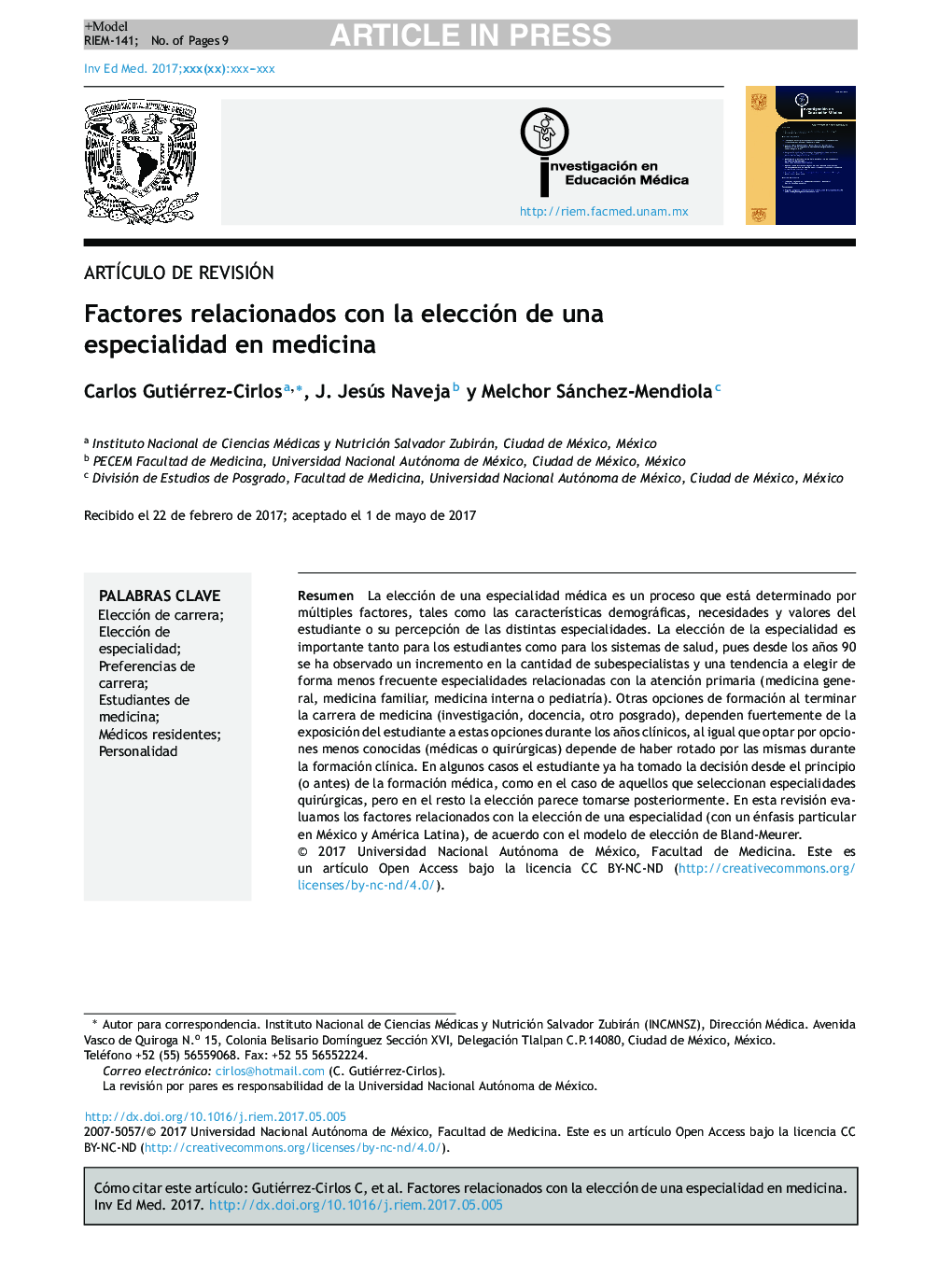| Article ID | Journal | Published Year | Pages | File Type |
|---|---|---|---|---|
| 8758607 | Investigación en Educación Médica | 2017 | 9 Pages |
Abstract
The choice of medical specialty is linked to various factors, such as demographic features and student perception of the specialties, values, and priorities. The choice is as relevant to the students themselves as to the health systems. Since the 1990s, an increase in the number of sub-specialists has been observed, as well as a decreasing trend towards the selection of Primary Care specialties (e.g., general practitioner, family medicine, internal medicine, paediatrics). Other clinical training options after the medical degree, such as research or teaching, strongly depend on the exposure of the student to these options during their clinical years. This also occurs with lesser-known options (either clinical or surgical), which depend on having rotated in these while training. In some cases the student has already made the decision from the beginning (or before) medical training, as in the case of those who select surgical specialties, but in the rest, the choice seems to be made later. In this review, we assess the factors related to the choice of specialty (with a particular emphasis on Mexico and Latin America), in accordance with the Bland-Meurer model.
Keywords
Related Topics
Health Sciences
Medicine and Dentistry
Medicine and Dentistry (General)
Authors
Carlos Gutiérrez-Cirlos, J. Jesús Naveja, Melchor Sánchez-Mendiola,
